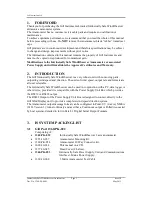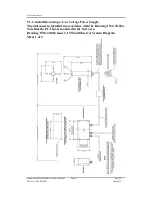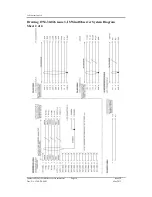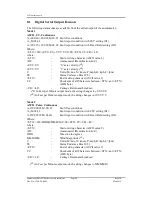
Gill Instruments Ltd
Intrinsically Safe WindObserver Anemometer
Page 16
Issue 10
Doc. No. 1360-PS-0001
May 2015
5.2.2 Power Supply Low Voltage
Instructions specific to hazardous area installations in accordance with
IEC60079-0:2011 clause 30.
The following instructions relevant to safe use in a hazardous area apply to equipment
covered by certificate numbers IECEx SIR 13.0159 and Sira 13ATEX2384.
1.
The certification marking is as follows:
Certificate number:
IECEx SIR 13.0159
Sira 13ATEX2384
Certification code:
[Ex ia Ga] IIC
[Ex ia Da] IIIC
[Ex ia Ga] IIC
[Ex ia Da] IIIC
Other marking:
(Ta = -30°C to +40°C)
0518
II(1)GD
2.
The equipment may only be used in non-hazardous area.
3.
This is an associated equipment which interfaces with equipment that may be
used in zones 0, 1 & 2 with flammable gases and vapours with apparatus
groups IIC.
4.
This is an associated equipment which interfaces with equipment that may be
used in zones 20, 21 & 22 with flammable dusts, fibres and flyings in groups
IIIC.
5.
The equipment is only certified for use in ambient temperatures in the range -
30°C to +40°C and should not be used outside this range.
6.
Installation shall be carried out in accordance with the applicable code of
practice by suitably-trained personnel.
7.
There are no special checking or maintenance conditions other than a periodic
check.
8.
With regard to explosion safety, it is not necessary to check for correct
operation.
9.
The equipment contains no user-replaceable parts (with the exception of the F1
user replaceable fuse) and is not intended to be repaired by the user. Repair of
the equipment is to be carried out by the manufacturer, or their approved
agents, in accordance with the applicable code of practice.
Note: FI fuse must
be replaced with Ceramic Anti-surge time lag fuse 20mm x 5mm, rating
250Vac 1A.
10.
Repair of this equipment shall be carried out in accordance with the applicable
code of practice.
11.
If the equipment is likely to come into contact with aggressive substances, e.g.
acidic liquids or gases that may attack metals or solvents that may affect
polymeric materials, then it is the responsibility of the user to take suitable
precautions that prevent it from being adversely affected thus ensuring that the
type of protection is not compromised.
















































